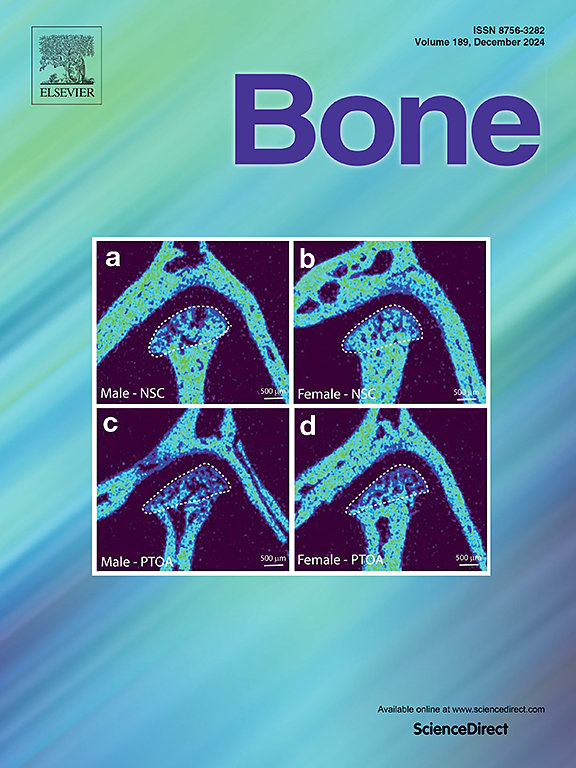Ergothioneine alleviates osteoporosis via the ROS-MAPK signaling Axis
IF 3.5
2区 医学
Q2 ENDOCRINOLOGY & METABOLISM
引用次数: 0
Abstract
The accumulation of reactive oxygen species (ROS) within cells regulates the formation and function of osteoclasts, which is crucial therapeutic target for the treatment of osteoporosis. Ergothioneine (EGT) is a rare amino acid with strong antioxidant and anti-inflammatory properties. However, its application on osteoporosis has not been reported. In this study, we investigated the effects of EGT on osteoclastogenesis in vitro and in ovariectomized (OVX) mice. The results revealed that EGT could suppress RANKL-induced podosome belt formation and osteoclast development in vitro, while reducing intracellular ROS levels by upregulating key antioxidant enzymes, including HO-1 and Catalase. EGT was also found to downregulate the expression of critical osteoclast-specific proteins such as Trap, c-Fos, and Ctsk through attenuation of MAPK signaling. The potential of EGT to protect against trabecular bone loss in OVX mice was further demonstrated by micro-CT imaging, possibly by reducing osteoclast numbers shown by histological outcomes. These findings together highlighted the potential value of EGT as a novel tool for treating osteoporosis through its ability to suppress osteoclastogenesis and mitigate the accumulation of intracellular ROS.
麦角硫因通过ROS-MAPK信号轴缓解骨质疏松症
细胞内活性氧(reactive oxygen species, ROS)的积累调节破骨细胞的形成和功能,是治疗骨质疏松症的重要靶点。麦角硫因(EGT)是一种罕见的氨基酸,具有很强的抗氧化和抗炎特性。然而,其在骨质疏松症中的应用尚未见报道。在这项研究中,我们研究了EGT对体外和卵巢切除(OVX)小鼠破骨细胞生成的影响。结果表明,EGT可以抑制rankl诱导的足小体带形成和破骨细胞的体外发育,同时通过上调HO-1和过氧化氢酶等关键抗氧化酶来降低细胞内ROS水平。EGT还通过抑制MAPK信号传导,下调关键破骨细胞特异性蛋白(如Trap、c-Fos和Ctsk)的表达。显微ct成像进一步证明了EGT对OVX小鼠小梁骨丢失的保护潜力,可能是通过减少组织学结果显示的破骨细胞数量。这些发现共同强调了EGT作为一种治疗骨质疏松症的新工具的潜在价值,因为它具有抑制破骨细胞生成和减轻细胞内ROS积累的能力。
本文章由计算机程序翻译,如有差异,请以英文原文为准。
求助全文
约1分钟内获得全文
求助全文
来源期刊

Bone
医学-内分泌学与代谢
CiteScore
8.90
自引率
4.90%
发文量
264
审稿时长
30 days
期刊介绍:
BONE is an interdisciplinary forum for the rapid publication of original articles and reviews on basic, translational, and clinical aspects of bone and mineral metabolism. The Journal also encourages submissions related to interactions of bone with other organ systems, including cartilage, endocrine, muscle, fat, neural, vascular, gastrointestinal, hematopoietic, and immune systems. Particular attention is placed on the application of experimental studies to clinical practice.
 求助内容:
求助内容: 应助结果提醒方式:
应助结果提醒方式:


